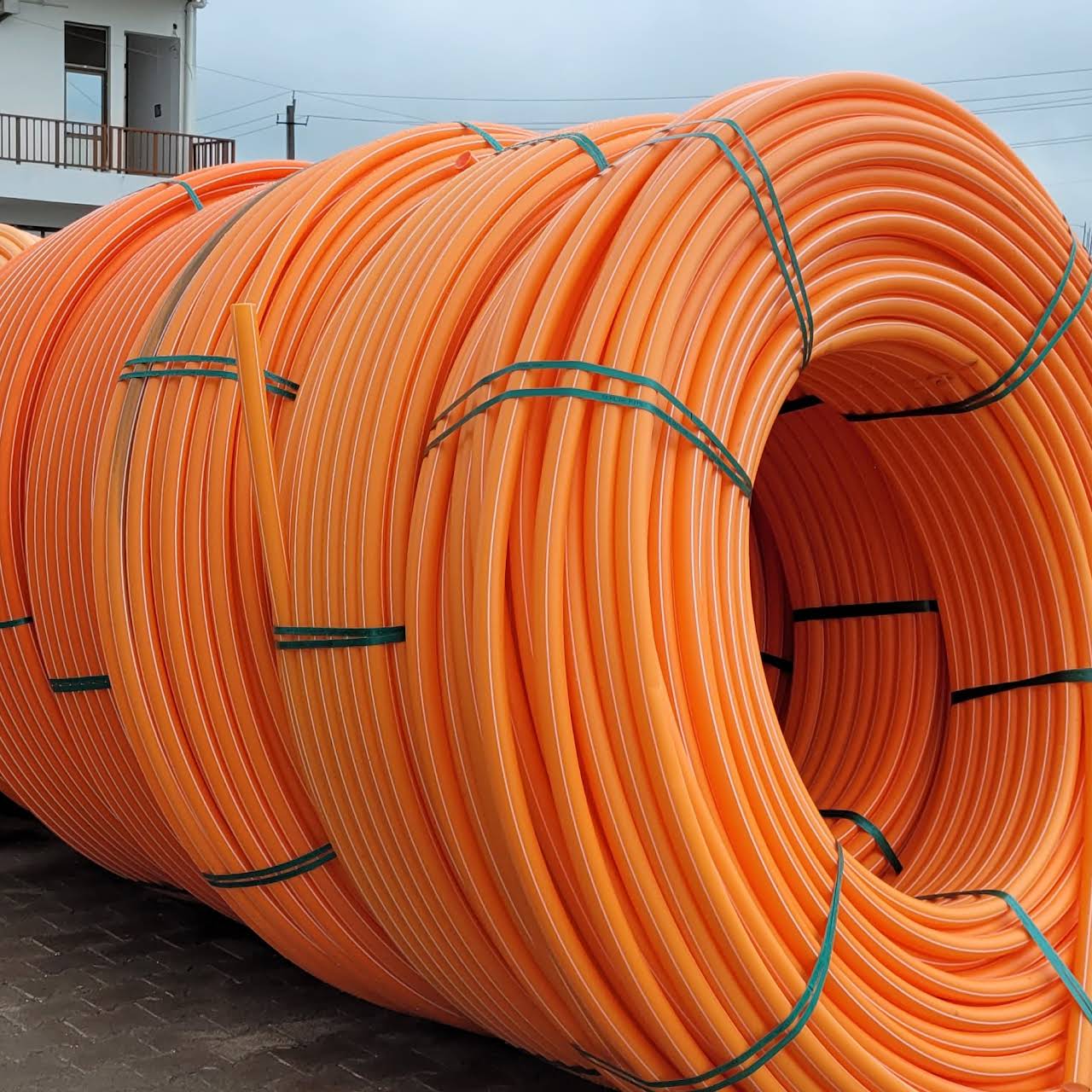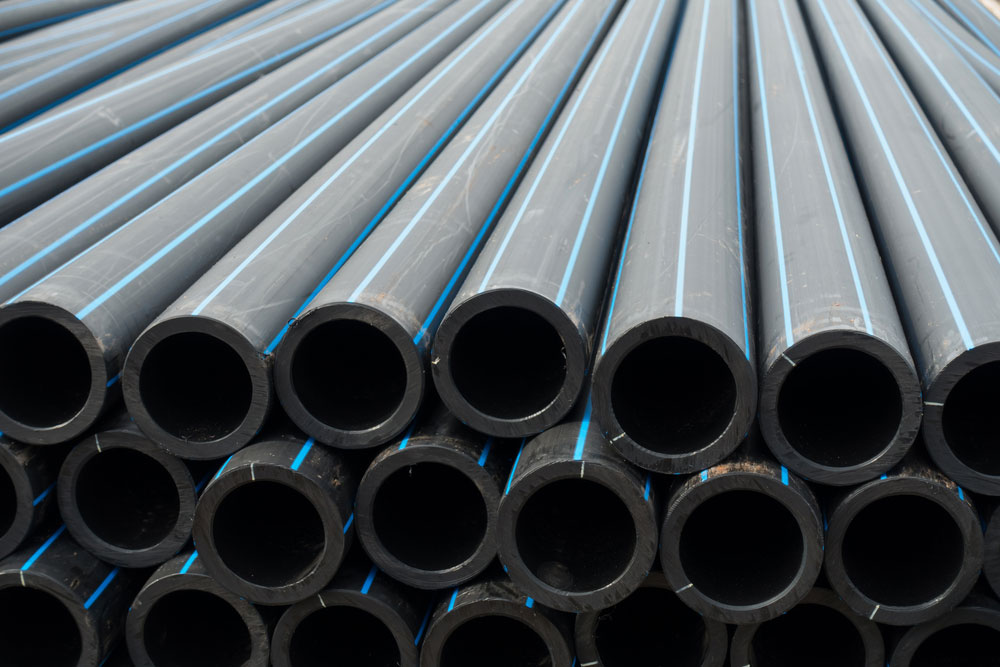Critical Benefits of custom hdpe pipe manufacturing Midland TX for Specialized Industries
Wiki Article
Discover the Manufacturing Refine Behind High-Quality HDPE Pipeline and Its Applications
The production process of high-quality HDPE pipes is intricate and methodical. It begins with the option of basic materials that improve performance. Following this, ethylene undergoes polymerization to create material, which is after that formed via extrusion. Quality control is extremely important, making certain that the last product fulfills rigorous standards. The journey of HDPE pipelines doesn't end with production. Their applications throughout various sectors disclose a broader relevance worth checking out.Understanding HDPE: Qualities and Advantages

High-density polyethylene (HDPE) is a functional thermoplastic understood for its durability and resistance to numerous environmental elements. This product shows superb tensile stamina, making it suitable for demanding applications. Its low-density framework adds to a lightweight item, promoting ease of taking care of and installation. HDPE also showcases remarkable resistance to chemicals, which minimizes degradation when revealed to harsh substances.
The material's low moisture absorption better improves its durability, making it excellent for usage in pipelines and storage containers. Additionally, HDPE is resistant to ultraviolet (UV) radiation, guaranteeing that items preserve their honesty even when exposed to sunshine. Its flexibility enables for the development of elaborate shapes without jeopardizing strength. The environment-friendly nature of HDPE, typically stemmed from recycled materials, contributes to its charm, advertising lasting methods in manufacturing. Generally, these residential or commercial properties and benefits make HDPE a preferred option for various industrial and customer applications.
Raw Product Option for HDPE Manufacturing
The option of resources for HDPE production is necessary to verify the end product meets the desired specs and quality criteria. High-density polyethylene (HDPE) is largely produced from polymerized ethylene, originated from nonrenewable fuel sources such as gas or petroleum. The quality of these feedstocks greatly influences the mechanical and thermal residential or commercial properties of the final HDPE.Additives additionally play a significant function in enhancing HDPE's performance, including antioxidants, UV stabilizers, and colorants, which boost longevity and resistance to ecological aspects. The selection process must think about not just the chemical make-up of the raw products but additionally their handling attributes to ensure effective manufacturing.
The sourcing of raw materials should focus on sustainability and conformity with ecological policies, as responsible techniques are crucial in today's market. Ultimately, careful resources choice lays the structure for generating top notch HDPE pipes appropriate for diverse applications.
The Extrusion Refine: Forming HDPE Pipeline
The extrusion procedure plays a crucial role fit HDPE pipes, beginning with careful material prep work techniques that guarantee ideal circulation and consistency. Just as important is the layout of the die, which straight affects the final dimensions and surface area high quality of the pipeline. With each other, these aspects add greatly to the effectiveness and quality of HDPE pipeline manufacturing.Material Prep Work Techniques
Reliable production of HDPE pipelines begins with careful material preparation techniques, specifically the extrusion process. During this phase, high-density polyethylene material is very first dried out to eliminate wetness, ensuring suitable flow attributes. The material is after that fed right into the extruder, where it goes through home heating and melting, transforming right into a thick state. This home heating procedure is very carefully regulated to preserve the material's honesty and efficiency. The liquified HDPE is required via a die, forming it into a continuous pipeline kind. Proper temperature level monitoring throughout extrusion is crucial, as it directly influences the product's residential properties and the last item top quality. As soon as formed, the HDPE pipeline is cooled down and cut to defined lengths, prepared for subsequent handling and applications.Die Layout Importance
Accuracy in die design plays a vital role in the extrusion procedure of HDPE pipelines. The die works as the final shaping device, straight affecting the pipe's dimensions, wall thickness, and surface coating. A properly designed die guarantees uniform product circulation, reducing defects such as abnormalities and weak points. The geometry of the die have to be enhanced to fit the particular homes of HDPE, including its viscosity and thermal habits during extrusion. Additionally, the cooling price of the product as it travels through the die can considerably affect the pipe's architectural stability. Subsequently, investing in innovative die modern technology is crucial for suppliers intending to create premium HDPE pipes that meet industry requirements and customer assumptions.Top Quality Control Actions in HDPE Manufacturing
Numerous aspects affect the high quality of HDPE pipe production, reliable quality control procedures are essential to ensure uniformity and reliability in the final item (hdpe pipe suppliers Midland TX). Secret quality assurance methods consist of strenuous material assessment, validating that the raw polyethylene fulfills well-known standards for purity and density. During the extrusion process, specifications such as temperature, pressure, and cooling time are closely kept an eye on to keep dimensional precision and architectural honestyIn addition, post-production screening is essential; suppliers typically perform hydrostatic examinations to analyze the pipeline's stamina and resistance to stress. Aesthetic assessments for surface problems further improve quality control. Accreditation from pertinent criteria organizations, like ASTM or ISO, provides an added layer of trustworthiness. By carrying out these comprehensive quality assurance actions, manufacturers can minimize problems, improve performance, and make sure that the HDPE pipes meet the specific demands of different applications, inevitably bring about client fulfillment and rely on the product.
Applications of HDPE Pipeline Across Industries
HDPE pipelines are utilized throughout different sectors because of their longevity and convenience. In water circulation systems, they assure reliable shipment, while in wastewater management, they offer dependable remedies for waste transportation. Additionally, agricultural watering networks take advantage of HDPE's resistance to corrosion and adaptability, making it an ideal option for Our site modern-day farming practices.
Water Circulation Solutions
A significant number of industries count on high-density polyethylene (HDPE) pipes for effective water distribution systems. Understood for their durability and resistance to corrosion, HDPE pipelines are extensively used in metropolitan supply of water networks, farming watering, and commercial applications. Their lightweight nature helps with simple handling and installment, decreasing labor prices and time. Additionally, HDPE pipes can fit numerous pressure levels, making them ideal for both low and high-pressure systems. hdpe pipe in stock Midland TX. The adaptability of the material enables seamless combination right into existing infrastructure, reducing the need for substantial excavation. HDPE's resistance to chemical seeping warranties that the water supplied stays secure and clean, making it a suitable selection for maintaining the top quality of potable water across various fields.Wastewater Management Solutions
Reliable water distribution systems additionally pave the means for ingenious wastewater monitoring solutions, where high-density polyethylene (HDPE) pipelines play a significant role. Distinguished for their sturdiness and resistance to rust, HDPE pipes are optimal for transferring wastewater in numerous setups. Their versatility enables very easy setup in complex atmospheres, minimizing the requirement for considerable excavation. Furthermore, HDPE's smooth indoor surface minimizes rubbing, boosting flow prices and performance. These pipelines are also resistant to chemical leaching, making certain that contaminants do not jeopardize the surrounding atmosphere. Industries, communities, and treatment centers increasingly depend on HDPE pipes for their reliability and durability, making them a favored choice for modern wastewater administration systems. This flexibility emphasizes the crucial value of HDPE pipes throughout countless applications.Agricultural Watering Networks
Agricultural watering networks benefit considerably from the usage of high-density polyethylene (HDPE) pipelines, which give reliable and reliable water shipment to crops. HDPE pipelines are light-weight, making them simple to transport and install, while their flexibility enables numerous configurations in varied terrains. These pipes demonstrate superb resistance to rust, chemicals, and UV radiation, making certain resilience in rough farming settings. In addition, their smooth interior surface lessens rubbing loss, maximizing water flow and decreasing power expenses related to pumping. The longevity of HDPE pipelines, often exceeding half a century, adds to decrease maintenance and replacement expenses. Farmers increasingly count on HDPE pipes to boost irrigation effectiveness and advertise lasting farming practices, inevitably leading to improved plant returns and resource preservation.
Future Patterns in HDPE Pipe Technology
As the need for sustainable and efficient facilities expands, innovations check my site in HDPE pipeline innovation are positioned to transform numerous sectors. Emerging fads include the combination of smart technologies, such as sensing units and IoT abilities, which facilitate real-time monitoring of pipe conditions, decreasing upkeep expenses and protecting against leakages. In addition, the advancement of innovative manufacturing strategies, such as 3D printing, is allowing the manufacturing of complex, personalized pipeline designs that cater to details project requirements.The focus on recycling and circular economy practices is driving the technology of HDPE pipelines made from recycled products, boosting sustainability. Enhanced jointing techniques, such as electro-fusion and mechanical fittings, are also boosting setup efficiency and integrity. The growing focus on ecological regulations is pressing suppliers to take on greener production processes, making certain that HDPE pipelines not just satisfy market requirements but additionally cultivate an even more sustainable future for facilities development.
Often Asked Inquiries
How Does HDPE Contrast to Other Plastic Materials?
HDPE outshines lots of other plastic products pertaining to durability, chemical resistance, and adaptability. Its low thickness and high tensile strength make it suitable for different applications, commonly surpassing choices in both performance and longevity.What Are the Ecological Impacts of HDPE Manufacturing?
The environmental effects of HDPE manufacturing consist of greenhouse gas emissions, power consumption, and potential contamination from manufacturing procedures. Furthermore, improper disposal can bring about soil and water contamination, elevating issues concerning long-lasting eco-friendly results.Can HDPE Pipeline Be Reused?
Yes, HDPE pipes can be reused. Lots of facilities accept made use of HDPE for processing, transforming it into brand-new items. This recycling adds to sustainability initiatives, reducing plastic waste while saving sources and power in the manufacturing cycle.What Is the Lifespan of HDPE Pipes?

Just How Do Temperature Variants Influence HDPE Pipe Performance?
Temperature level variations substantially impact HDPE pipe efficiency, influencing adaptability and strength. Heats can lead to softening, while low temperature levels might cause brittleness, ultimately affecting have a peek here the pipe's sturdiness and viability for numerous applications in diverse environments.Report this wiki page